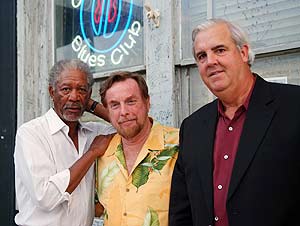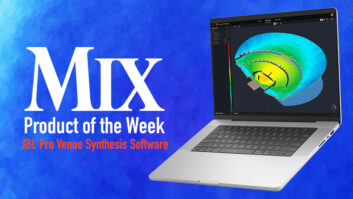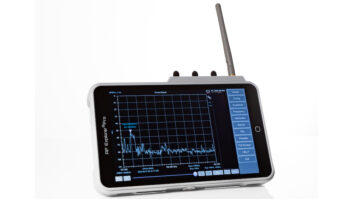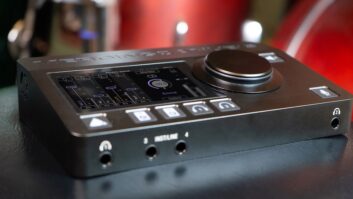
Morgan Freeman, Hartley Peavey and Bill Luckett
Where U.S. Highways 61 and 49 intersect — at the town of Clarksdale, Miss., the fabled Crossroads — holds a familiar lure for music fans: Ground Zero Blues Club, created by Mississippi native/actor Morgan Freeman and blues aficionados Bill Luckett and Howard Stovall in 2001. Soon after, the group felt the pull that brought so many bluesmen before them to Memphis. It’s where Clarksdale native Ike Turner cut rock ‘n’ roll record Rocket 88, and where Elvis Presley and Jerry Lee Lewis began their careers. A city so linked to the blues made a natural second home for Ground Zero, but the audio installation at Ground Zero Blues Club Memphis is a much larger installation than the century-old wooden Clarksdale venue.
“The original Ground Zero Blues Club is housed in a 100-year-old cotton warehouse,” says Kent Morris of Cornerstone Media, an audio consultant who upgraded the original Ground Zero Blues Club to a Peavey Versarray line array system before tackling the Memphis club. “There were many acoustical differences between the two projects and several new challenges.” For example, the Memphis venue is a brand-new facility constructed of concrete floors, walls and ceiling, with a full glass wall along the front of the club. It’s also a combination bar/restaurant/performance hall, while the original venue emphasized the performance aspect.
“We had to be careful about creating a performance area that wouldn’t blast the other areas of the venue,” Morris adds. “We needed a more distributed audio system. A great benefit of the Versarray is that you can move energy from the front of the room to the back in a very controlled way. Because the enclosures control sound dispersion so well, we could focus their energy onto the dancefloor and those tables nearby where the people most interested in hearing the music would sit.”
The system comprises four Versarray 112 enclosures, each with two 218 subs underneath. The team also set up a slightly delayed Impulse 2652 speaker that covers the side area where people are seated, and another two for the bar area along the back wall. Peavey’s Architectural Acoustics Digitool MX digital signal processor was used to control the individual areas separately. Sitting at front of house is a Crest HP-8 32 board, while a Crest XRM lives at monitor world. The venue also boasts an extensive collection of Peavey mics and processing.






